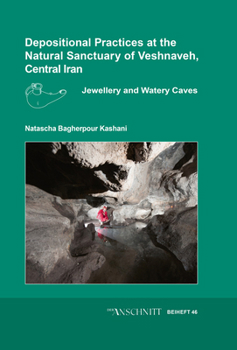Depositional Practices at the Natural Sanctuary of Veshnaveh, Central Iran: Jewellery and Watery Caves
Between 2000 and 2005 alongside their Iranian colleagues, the team from the German Mining Museum examined the prehistoric copper-mining area located close to the village of Veshnaveh in the mountains of central Iran. Two mines, Chale Ghar 1 and 2, which had been hollowed out by copper-mining activities, had been filled with the water from melting snow. There objects were uncovered unrelated to prehistoric mining activities: among them were ceramics, as well as very well preserved animal bones, fruits and seeds, wooden vessels, as well as jewellery and personal ornaments. The assemblage and the way in which the objects had been disposed support the assumption that the mines had probably served as a natural sanctuary. Aided by a 14C examination of charcoal collected at the bottom of the depositional features, and by the discovery of an Umayyad coin, it is sensible to assume that the use of Chale Ghar 1 outside mining activities ran from c. 800 B.C. to the 8th century A.D. The present study deals with the classification of the personal ornaments, their possible import and trade, the depositional practice and aspects of pre-Islamic religious acts and religious actors. Between 2000 and 2005 alongside their Iranian colleagues, the team from the German Mining Museum examined the prehistoric copper-mining area located close to the village of Veshnaveh in the mountains of central Iran. Two mines, Chale Ghar 1 and 2, which had been hollowed out by copper-mining activities, had been filled with the water from melting snow. There objects were uncovered unrelated to prehistoric mining activities: among them were ceramics, as well as very well preserved animal bones, fruits and seeds, wooden vessels, as well as jewellery and personal ornaments. The assemblage and the way in which the objects had been disposed support the assumption that the mines had probably served as a natural sanctuary. Aided by a 14C examination of charcoal collected at the bottom of the depositional features, and by the discovery of an Umayyad coin, it is sensible to assume that the use of Chale Ghar 1 outside mining activities ran from c. 800 B.C. to the 8th century A.D. The present study deals with the classification of the personal ornaments, their possible import and trade, the depositional practice and aspects of pre-Islamic religious acts and religious actors.
Format:Hardcover
Language:English
ISBN:386757040X
ISBN13:9783867570404
Release Date:April 2022
Publisher:Verlag Marie Leidorf
Length:336 Pages
Weight:17.87 lbs.
Customer Reviews
0 rating





